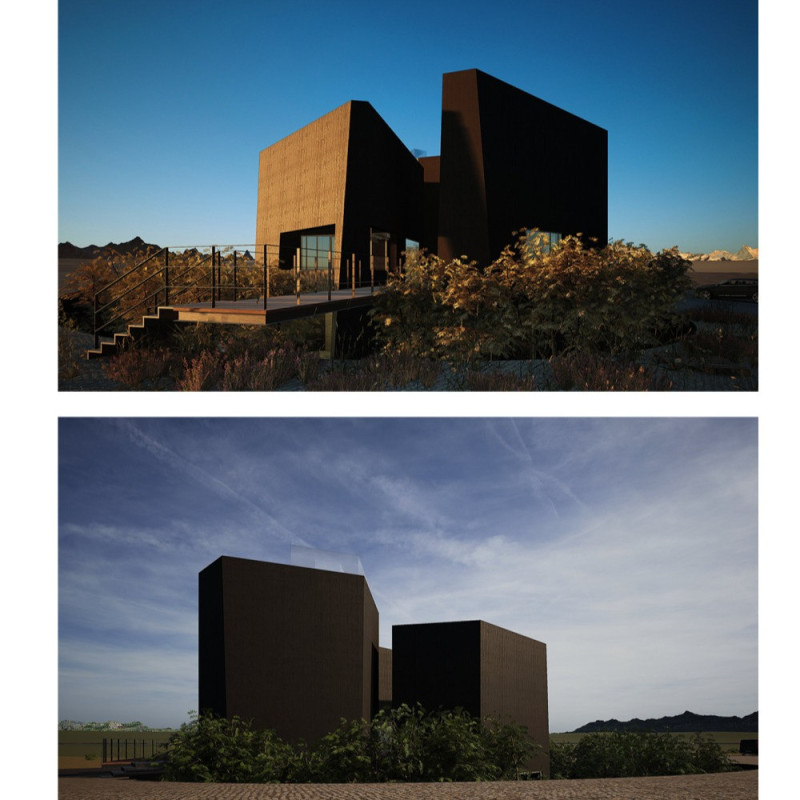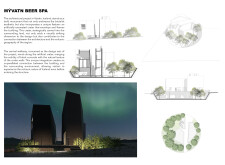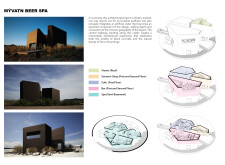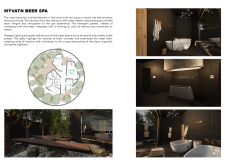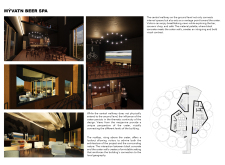5 key facts about this project
### Overview
Located in Vývatn, Iceland, the Mývatn Beer Spa presents a contemporary architectural response to its volcanic landscape. The design seeks to integrate the built environment with the unique geological features of the area, creating an immersive visitor experience that highlights the region’s natural beauty. The architectural concept is grounded in a brutalist aesthetic, utilizing raw materials and geometric forms to enhance the relationship between the structure and its surroundings.
### Spatial Dynamics
The architectural layout features a central walkway that connects diverse programmatic elements, including a café, bar, souvenir shop, and the spa itself. This pathway facilitates a journey from the exterior to the interior, culminating in the spa experience. Distinct building volumes, varying in height, contribute to an irregular skyline that contrasts with the natural terrain. The façade, primarily crafted from black concrete, is punctuated by expansive glass panels that invite natural light while framing views of the landscape.
### Materiality and Sustainability
Materials were selected for their aesthetic and environmental qualities. Black concrete resonates with the rugged character of the Icelandic geology, while extensive use of glass enhances connectivity with the exterior environment. Natural wood elements introduce warmth to interiors, serving as a tactile contrast to the concrete. The incorporation of local stone into the landscaping further emphasizes the geological context and promotes a sustainable relationship with the site. This design prioritizes low-impact methodologies, reflecting an understanding of the environmental implications of architectural practice.


